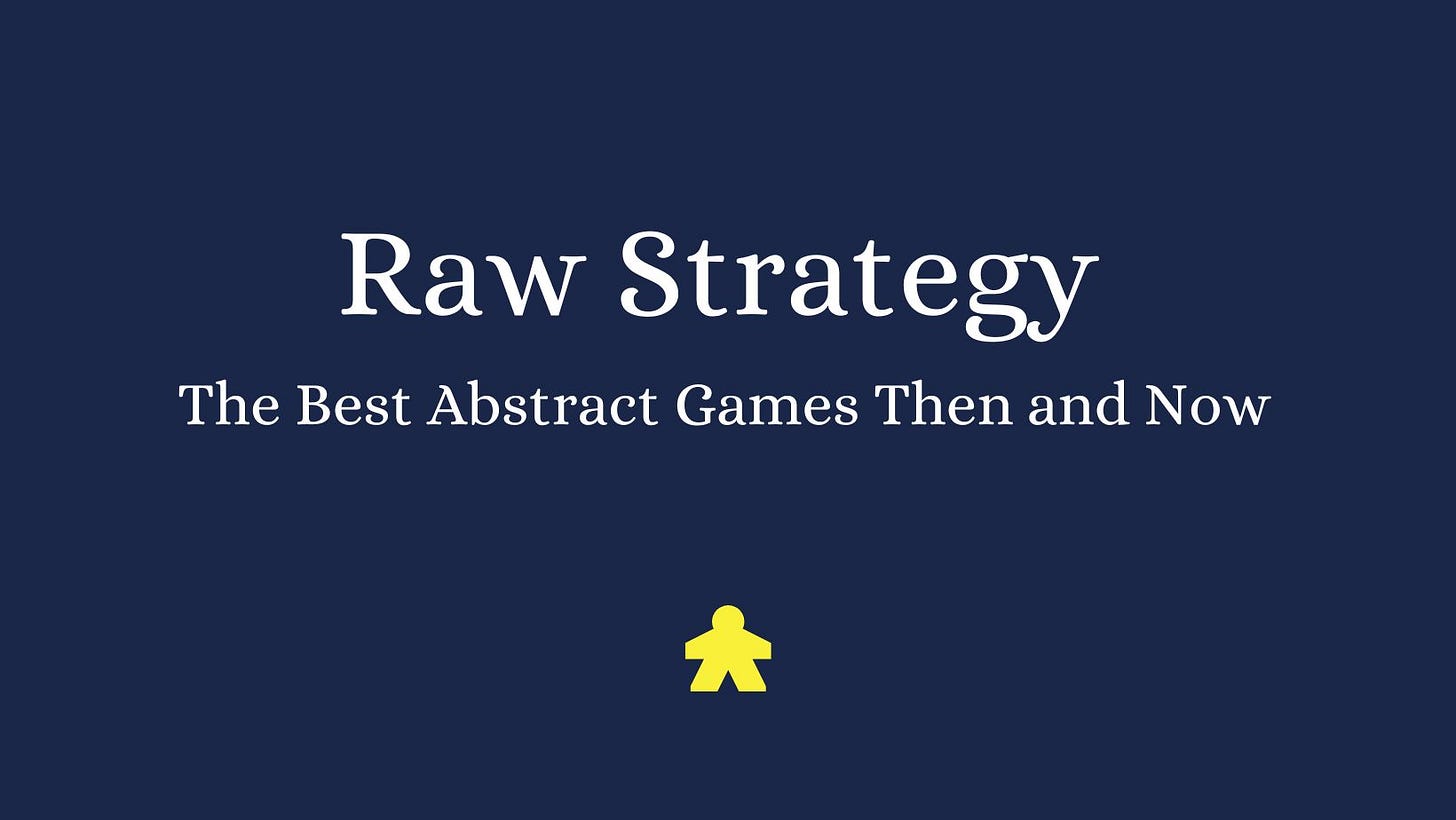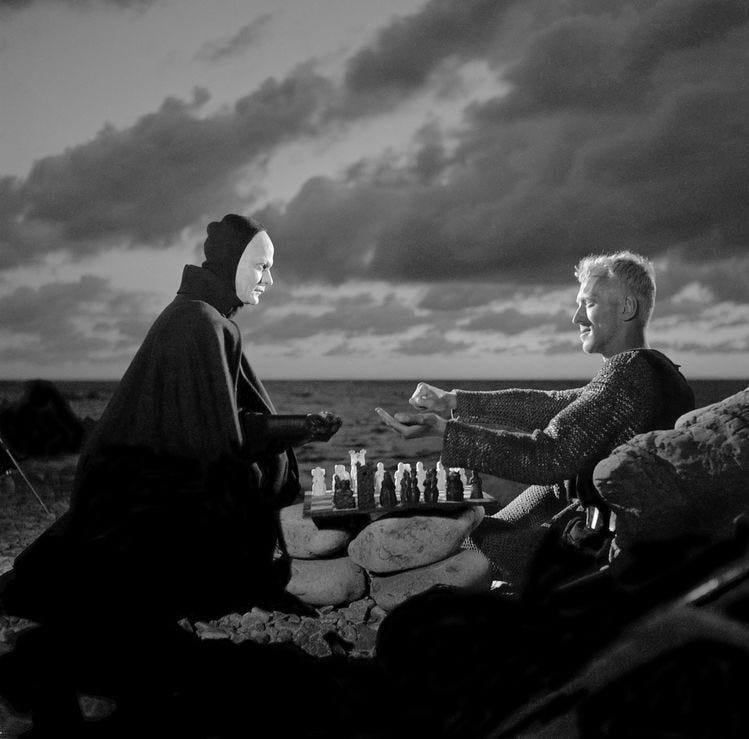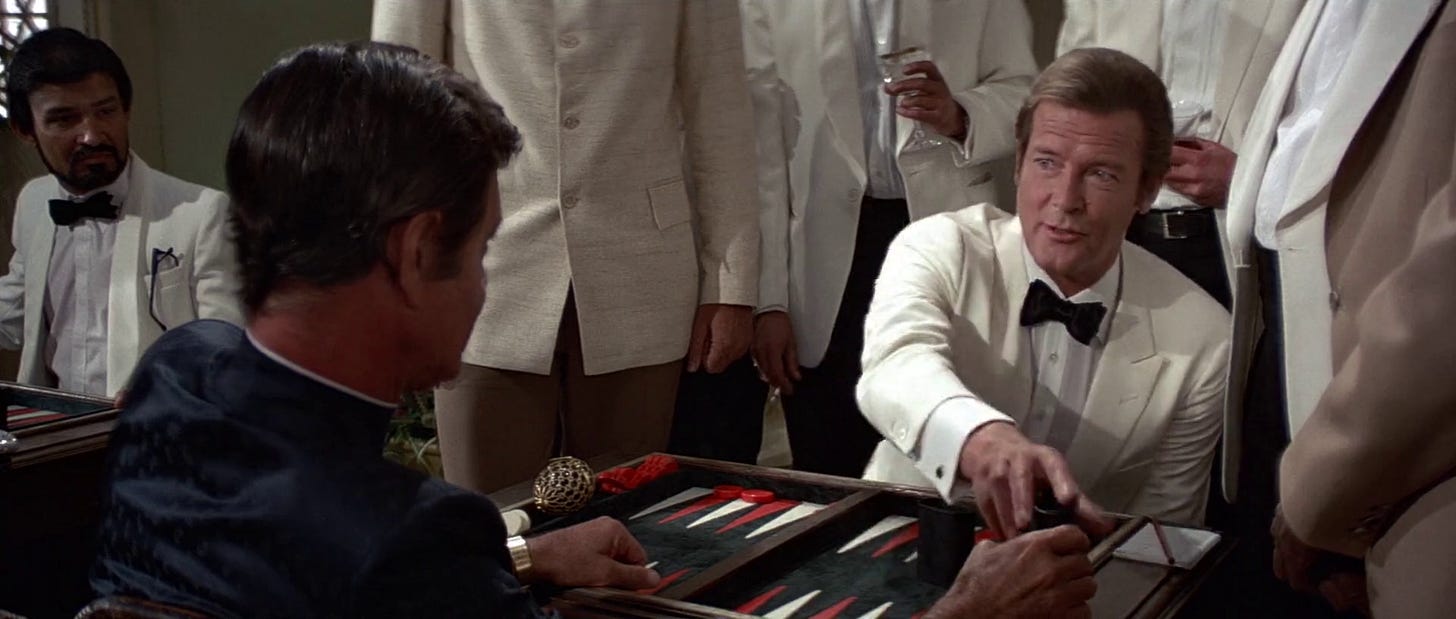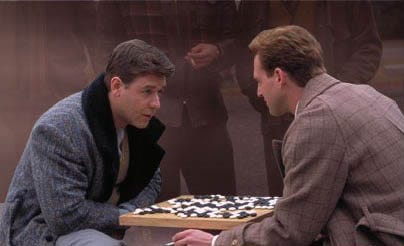Abstract strategy games are pretty much the opposite of everything that I’ve talked about for the last year. I tend to gravitate towards games that are saturated in theme; practically marinated in it. Which is to say, I like games that tell some kind of story. Abstract games are on the other end of the spectrum, with little, if any theme, and outcomes that rely on little, if any luck. Deceptively simple rules belie the subtle intricacies of how these games actually play. In many cases, abstract games also exhibit the property of “perfect information”, which is a term borrowed from game theory (and only fair, seeing as how mathematicians stole the word “game” from us). Perfect information describes a game state in which everything is apparent to both players, including the history of moves already made.
When you hear “abstract game”, Chess is probably the first example that comes to mind. Modern Chess developed around the 16th century, but its history goes all the way back to 7th century India. The nitpickers out there will tell us that Chess isn’t the ideal example of an abstract game because of its vestigial military theme. Indeed, in its earliest incarnation, Chaturanga, the name itself was a reference to the four divisions of the Indian military. The pieces we know today as pawns, knights, rooks, and bishops originally represented infantry, cavalry, chariotry, and elephantry (which, in all likelihood, is the only reference to weaponized pachyderms you’ll hear all week).
Chess has been called both “the king of games” and ”the game of kings”, but it has a contender for that throne. Backgammon belongs to a table game lineage that stretches back 5000 years. Assorted versions of the game have been played not only by kings, but also pharaohs and emperors. It’s widely thought that the game came to Europe by way of Crusaders returning from the Holy Land, although it didn’t acquire the name “Backgammon” until 1645.
By modern standards, the “theme” of Backgammon is so subdued it’s practically subliminal. Whereas Chess originated as a form of wargame, Backgammon’s underlying motif is time (and, more fundamentally, the astronomy from which our measurements of time are derived). Each player is given 15 black or white checkers and has to race them in opposite directions around a horseshoe-shaped track with 24 triangular points. The points on the board represent the hours in a day, including the division of day from night. The sum of all the checkers is 30, equalling the days of the month (which is based, in turn, on the cycle of the moon). The days of the week are represented not by the board itself but by the dice, seeing as how the dice are designed so that opposite sides will always total seven (with seven being the total of the then observable planets, plus the Sun and Moon). Finally, as it was originally played, the checkers didn’t start on the board but had to be brought on one at a time. Therefore, each player had to get all 15 of their checkers across a board of 24 points, making a total of 360 points to be crossed (that being the days in a year according to most ancient calendars).
The quintessential abstract game is probably the oldest too. Go originated in China approximately 4000 years ago. Traditionally played on a wooden board with a black-lined, 19 x 19 grid, the pieces for Go are usually smooth, lentil-shaped black and white stones (181 black and 180 white, so be careful not to spill them unless taking inventory is your idea of a good time). Players alternate laying their stones down on vacant intersections of the grid with the objective of corralling the most territory on the board. You can take the opponent’s stones prisoner by surrounding them, leaving them no orthogonally adjacent points to place a stone.
In its homeland, Go developed such a cultural cachet that it joined painting, calligraphy, and the Chinese zither as one of the “four arts” expected of any Chinese scholar. It took Go until the 7th century to make its way to Japan, but once established the game flourished there as well. At the dawn of the Edo period (1603), the Tokugawa shogunate founded four schools devoted to the game, creating a lasting legacy of highly competitive, professional Go players.
Turning to modern abstracts, I’m going to constrain my discussion to black and white games, if only to make a nice pairing with the classics already discussed. The oldest of these, Othello, was introduced in Japan in 1973, and then in the U.S. in 1975. In terms of game mechanics, Othello is only marginally different from the game Reversi, which was invented in England in 1883 (by two different inventors who accused each other of being frauds). The major innovation of Othello is that each player begins the game with two of their disks in the center of the board, diagonally across from each other. The board itself has 8 x 8 spaces, like a checkerboard, but with a raised grid and lined with green felt.
Othello comes with 64 disks, black on one side and white on the other, with each player taking an opposing side. The object of Othello is to have the majority of disks turned over to your color at the end of the game. The challenge is that every time you place a new disk, you have to outflank at least one of the opponent’s disks. By “outflank”, I mean you need two disks of your color with any number of your opponent’s disks sandwiched between them in any direction. All the disks that you outflanked then get flipped over to your side.
Abalone may not be as well known as Othello, but I remember when it came out in 1990, so it’s a sentimental favorite of mine. Each player has 14 black or white marbles and the object of the game is to push six of your opponent’s marbles off the board (a hexagon of 61 circular spaces). Moving consists of pushing a row of up to three marbles in any of the six possible directions. In order to push the opponent’s marbles, you need to outnumber them and your own marbles need to be moving in a straight line (so two of your marbles can push one of theirs or three can push two). Abalone has been likened to sumo wrestling in its tactical application of leverage. If that’s not immediately obvious, it’s only because they don’t make the marbles wear tiny thongs.
Strategically speaking, Othello and Abalone are polar opposites. With Othello, you want to control the edge of the board, and ideally the corners, where the opponent has no possibility of outflanking you. With Abalone, you want to occupy the middle of the board and push gradually outwards.
If Abalone has one glaring flaw, it’s that it’s relatively easy for games to become stalled. The problem isn’t as egregious as with Tic-Tac-Toe, but the risks involved with going on offense are simply outweighed by the rewards of “turtling” into a defense wedge. To mitigate the problem, players have tried out different starting positions, with the “Belgian Daisy” alternative probably being the most popular. Instead of black and white marble phalanxes facing off on opposite sides of the board, players begin the game with two huddles of seven marbles each (each daisy-like huddle being a marble surrounded by six marbles of the same color).
It may seem arbitrary to change the rules that way, but recall that the starting position is the biggest difference between Othello and Reversi, and that Backgammon checkers didn’t always start on the board. Game rules, like game articles, can sometimes take on a life of their own.
The final abstract game that I’d like to discuss is Yinsh, part of the Gipf series by Belgian game designer, Kris Burm. Other abstract games in the series include Dvonn, Tzaar, and Lyngk. To me, the names sound like things a Klingon would shout while assembling Ikea furniture.
The board for Yinsh is a lattice of equilateral triangles, looking like a draftsman’s interpretation of a spider web. Each player starts the game with five rings (predominantly black or white, but flecked with the opposing color). During the placement phase, the players alternate laying down rings on any of the vacant nodes.
Once all of their rings have been placed, the movement phase begins. This is where the other game pieces for Yinsh come into play: a pool of 51 Othello-like markers, black on one side and white on the other, but rimmed in blue (with more of the black and white flecks). On their turn, each player will drop a marker down in the middle of one of their rings and then move the ring out along one of the lines radiating from that node. The ring being moved may not pass over another ring. It may pass over any number of adjacent markers, but it must then stop at the first vacant space. Any markers passed over this way are then flipped over to the opposing color. Wherever the ring comes to rest, a second marker is dropped.
The object of Yinsh is to get five markers in a row turned over to your color, at which point you remove all of them along with one of your rings. And that’s the insidious part. The first player to remove three of their rings wins the game, but the game becomes increasingly difficult with each ring you remove.
When you consider abstract games as a whole, you start to appreciate the attention given to the board and the game pieces themselves. The classics I’ve mentioned can all be enjoyed for their ornamental value, separate and apart from their value as games. But there is something tangibly satisfying about the modern games as well: the muffled thwack of an Othello disk on felt, the billiard-like clacking of Abalone marbles, the heft of a Yinsh ring. Perhaps what abstract games lack in theme, they make up for in the palpable sensations of play itself.
I’ll be returning to the topic of abstract games in the future, so please let me know if there’s a favorite you’d like to hear discussed.







Enjoy this writing, just discovered your Substack through that comment I replied to.
One thing I'll say: the theme to chess isn't so "vestigial" to those of us who learned to play the game through Battle Chess on MS-DOS! To this day I still think of my pawns as an army of spearmen and my rook as some sort of rock monster. As someone who, like you, prefers strong themes in board games, it makes chess more fun for me.
I’m glad you enjoyed it and thanks so much for writing. Keep reading and hopefully you’ll discover some games you’d like.